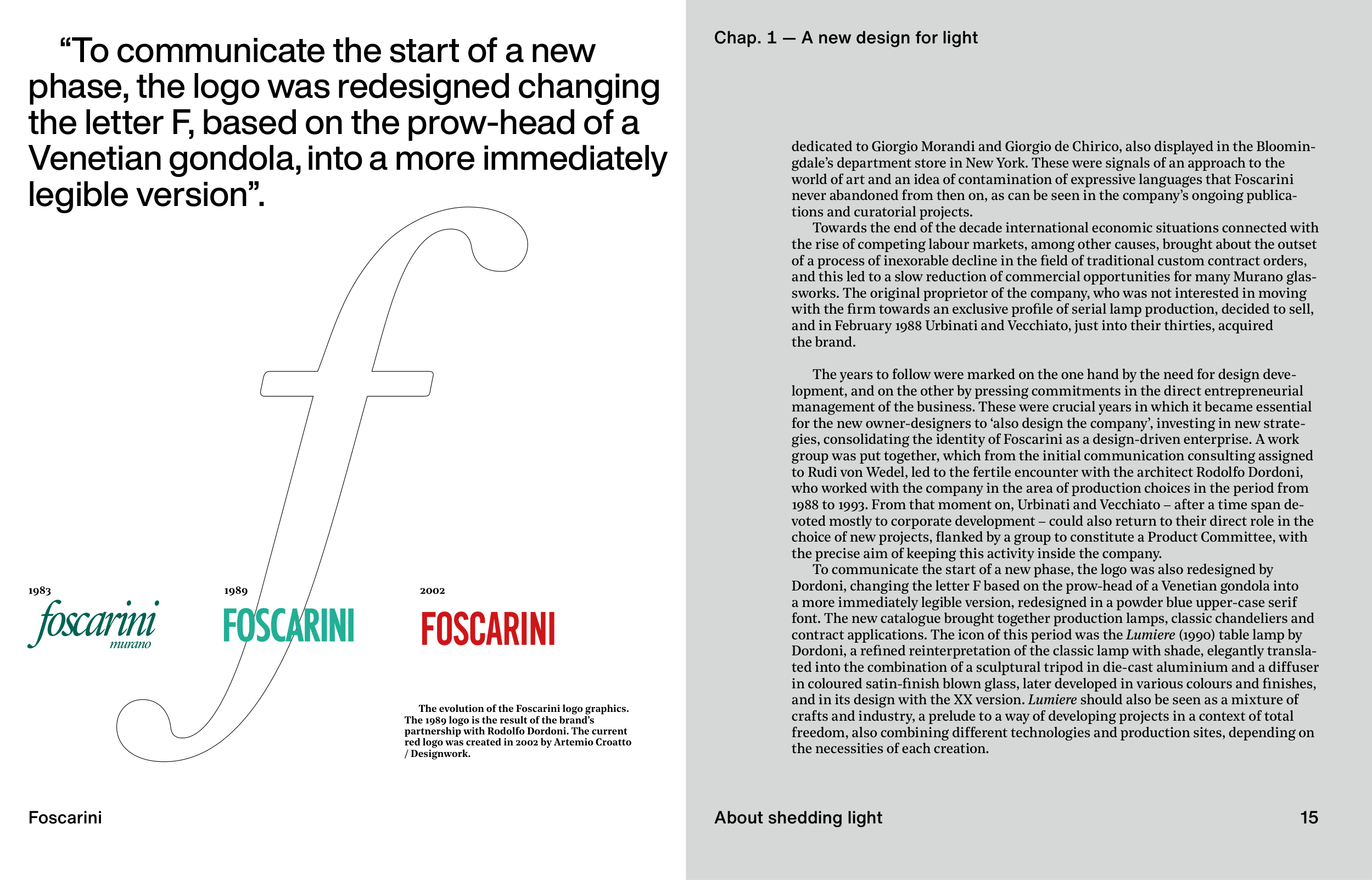15
1983
1989
2002
foscarini
murano
Foscarini
About shedding light
Chap. 1 — A new design for light
dedicated to Giorgio Morandi and Giorgio de Chirico, also displayed in the Bloomin-
gdale’s department store in New York. These were signals of an approach to the
world of art and an idea of contamination of expressive languages that Foscarini
never abandoned from then on, as can be seen in the company’s ongoing publica-
tions and curatorial projects.
Towards the end of the decade international economic situations connected with
the rise of competing labour markets, among other causes, brought about the outset
of a process of inexorable decline in the fi eld of traditional custom contract orders,
and this led to a slow reduction of commercial opportunities for many Murano glas-
sworks. The original proprietor of the company, who was not interested in moving
with the fi rm towards an exclusive profi le of serial lamp production, decided to sell,
and in February 1988 Urbinati and Vecchiato, just into their thirties, acquired
the brand.
The years to follow were marked on the one hand by the need for design deve-
lopment, and on the other by pressing commitments in the direct entrepreneurial
management of the business. These were crucial years in which it became essential
for the new owner-designers to ‘also design the company’, investing in new strate-
gies, consolidating the identity of Foscarini as a design-driven enterprise. A work
group was put together, which from the initial communication consulting assigned
to Rudi von Wedel, led to the fertile encounter with the architect Rodolfo Dordoni,
who worked with the company in the area of production choices in the period from
1988 to 1993. From that moment on, Urbinati and Vecchiato – after a time span de-
voted mostly to corporate development – could also return to their direct role in the
choice of new projects, fl anked by a group to constitute a Product Committee, with
the precise aim of keeping this activity inside the company.
To communicate the start of a new phase, the logo was also redesigned by
Dordoni, changing the letter F based on the prow-head of a Venetian gondola into
a more immediately legible version, redesigned in a powder blue upper-case serif
font. The new catalogue brought together production lamps, classic chandeliers and
contract applications. The icon of this period was the Lumiere (1990) table lamp by
Dordoni, a refi ned reinterpretation of the classic lamp with shade, elegantly transla-
ted into the combination of a sculptural tripod in die-cast aluminium and a diffuser
in coloured satin-fi nish blown glass, later developed in various colours and fi nishes,
and in its design with the XX version. Lumiere should also be seen as a mixture of
crafts and industry, a prelude to a way of developing projects in a context of total
freedom, also combining different technologies and production sites, depending on
the necessities of each creation.
15
“To communicate the start of a new
phase, the logo was redesigned changing
the letter F, based on the prow-head of a
Venetian gondola, into a more immediately
legible version”.
The evolution of the Foscarini logo graphics.
The 1989 logo is the result of the brand’s
partnership with Rodolfo Dordoni. The current
red logo was created in 2002 by Artemio Croatto
/ Designwork.


